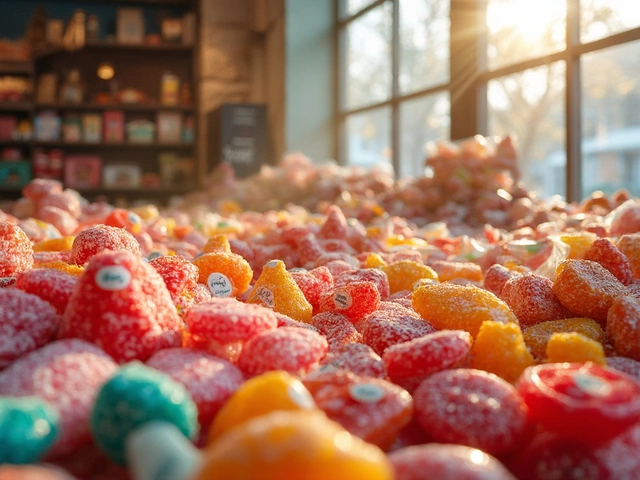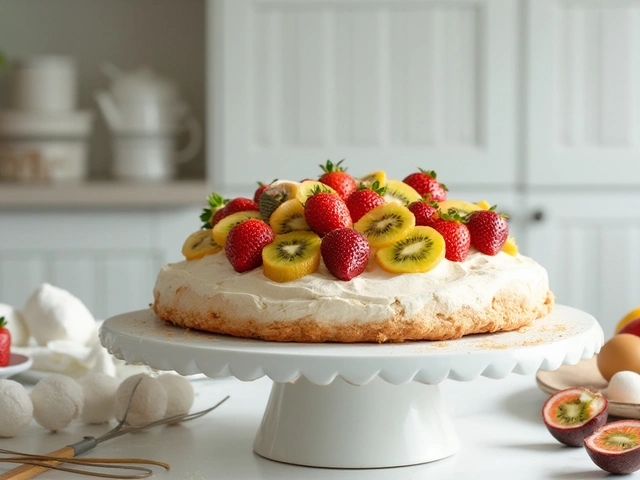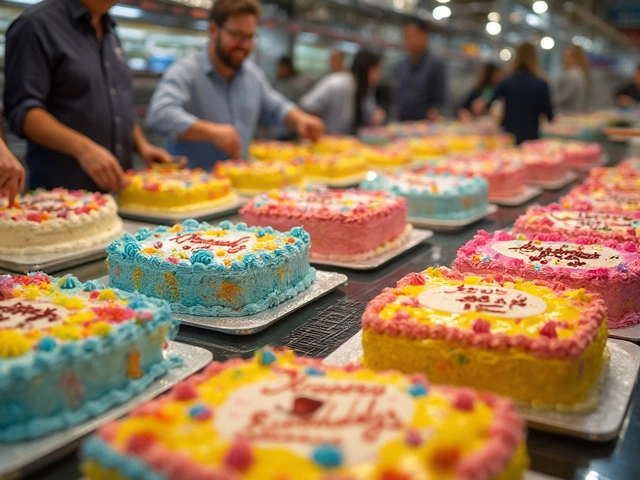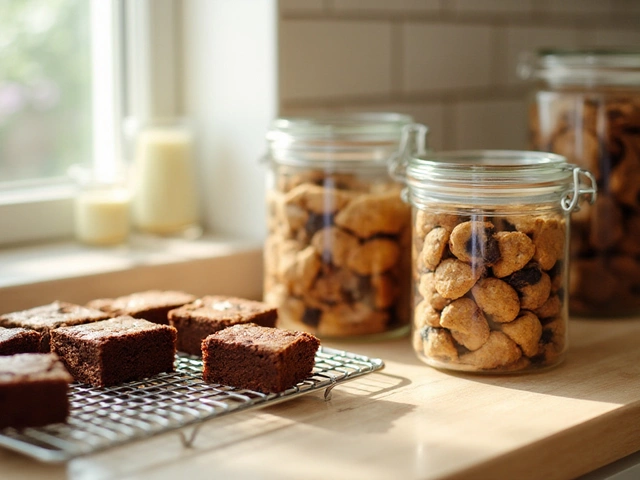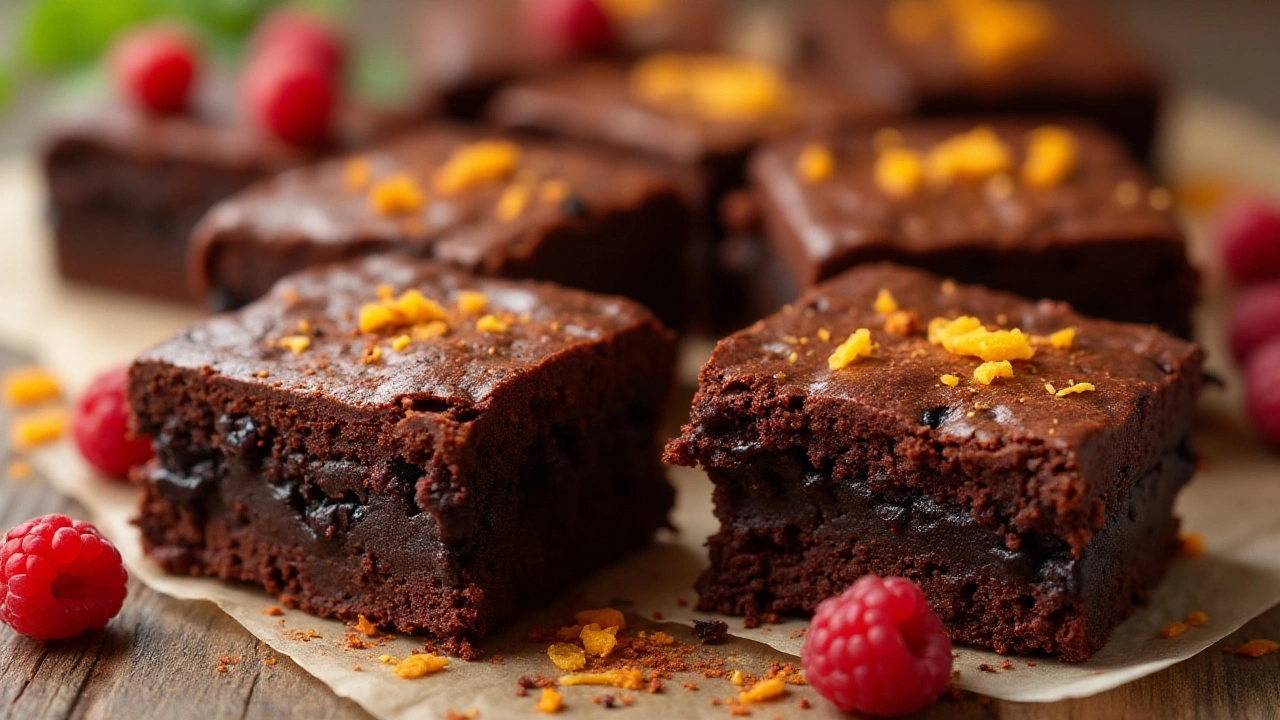
Brownies hold a special place in the hearts of dessert lovers around the globe. Their versatility and decadence make them a staple in countless households, each slice offering a symphony of flavors that captivate even the most discerning sweet-tooth. But what gives the brownie its oh-so-irresistible taste?
While chocolate is undoubtedly the star of the show, a myriad of other ingredients can transform this humble dessert into something extraordinary. Slight variations in a recipe can yield a completely different flavor profile, inviting bakers to explore and experiment in their kitchens.
Ever considered infusing your brownies with a hint of citrus or adding the richness of espresso? Perhaps incorporating seasonal fruits or spices can elevate the traditional chocolate bomb to a gourmet treat. Join us on a journey through the delectable world of brownies, where we'll uncover the secrets to achieving perfect texture, inventive flavor combinations, and the best ways to serve your creation. Prepare to indulge your taste buds and ignite your culinary creativity!
- The Classic Chocolate Brownie
- Unique Twists on Traditional Recipes
- Tips for Perfecting Brownie Texture
- Exploring Brownie Pairings
The Classic Chocolate Brownie
The classic chocolate brownie is a timeless dessert that transcends generations, beloved for its gooey texture and rich, chocolaty essence. The origins of this delectable treat are shrouded in culinary history, adding to its charm and allure. Some trace its birth back to the late 19th century, where it was supposedly a happy accident involving a forgetful baker who left out baking powder from a chocolate cake recipe. The result? A fudge-like creation with a dense body that has since captured the hearts of dessert aficionados worldwide.
The essential ingredients for crafting the perfect classic chocolate brownie are surprisingly simple. At its core, you need quality chocolate, flour, eggs, sugar, and butter. Yet, it is the balance and method of these ingredients that create magic. High-quality chocolate is important—opt for bittersweet or semi-sweet varieties to ensure a pleasantly deep and authentic chocolate flavor. Melting the chocolate and butter together creates a silky base, while the eggs contribute to that coveted chewiness, and sugar adds sweetness and can also impact texture based on the type used. Flour brings it all together, but too much can make the brownie cakey, which strays from the classic version.
The Art of Baking Brownies
Perfecting the art of brownie baking is not just about mixing ingredients; it's an intricate dance between time, temperature, and technique. Baking time is crucial. The line between underbaked and overbaked is a fine one; thus, keeping an eye on your oven is necessary for success. A toothpick inserted into the center should come out with just a few moist crumbs clinging to it. The brownie continues to set as it cools, achieving the ideal gooey texture without being raw in the center. As Callebaut, a leading chocolate producer, states, "The secret to great brownies is simply not overbaking them."
The secret to great brownies is simply not overbaking them. — Callebaut Chocolate
Each baker may have their personal touch, whether adding a pinch of salt to enhance the chocolate flavor or incorporating a touch of vanilla extract for depth. Some even like to sprinkle in nuts such as walnuts or pecans for added crunch. The possibilities are vast, yet the foundation remains: the classic brownie should always celebrate chocolate as its core essence.
According to a recent survey on dessert preferences conducted by Dessert Digest, brownies consistently rank among the top three favored treats in both North America and Europe, only occasionally losing out to chocolate chip cookies and cheesecake. This love affair shows no sign of fading, as home bakers and professional chefs alike continue to honor and reinvent this classic. Ultimately, the classic chocolate brownie is a marriage of simplicity and indulgence, a testament to the harmony of basic ingredients in creating something truly special.
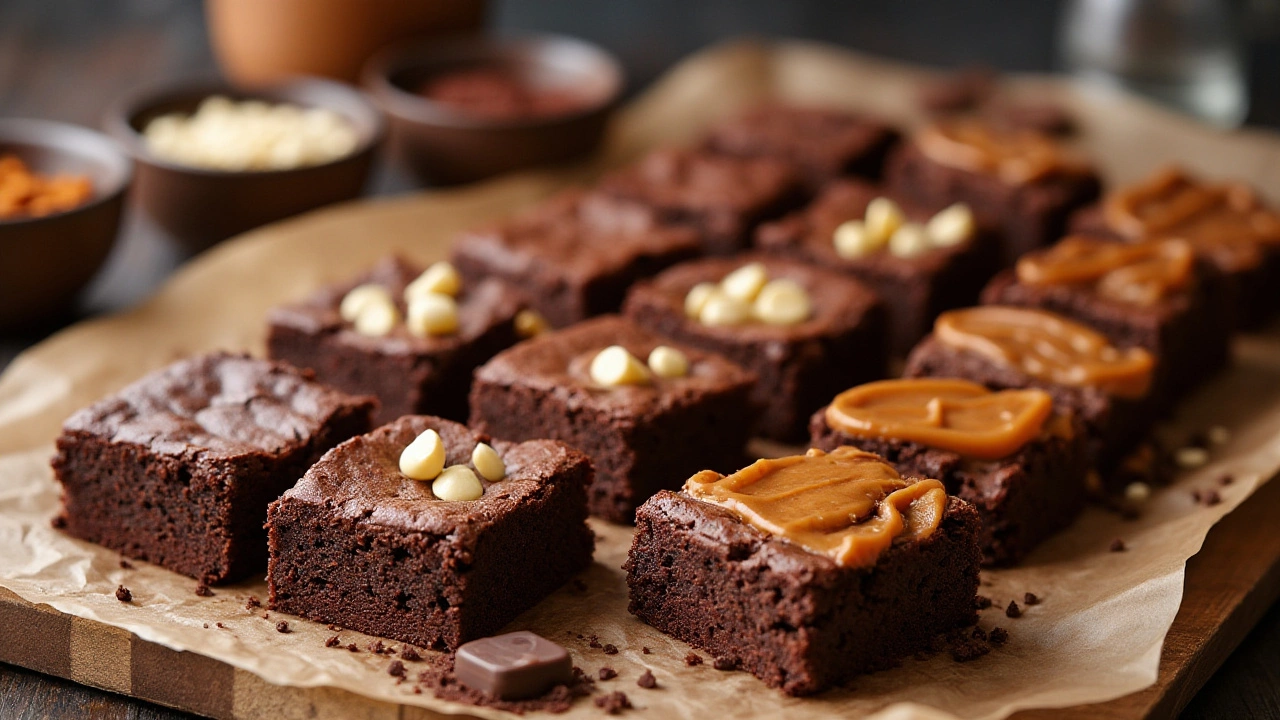
Unique Twists on Traditional Recipes
Exploring variations to the classic brownie introduces an opportunity to surprise and delight the taste buds. Breaking away from traditional chocolate can pave the way for innovative creations, each with a unique signature flavor. One such twist includes incorporating spices like cinnamon and cayenne, which not only enhance the richness of the chocolate but also introduce a subtle warmth that lingers with every bite. These spices are often paired with dark chocolate, creating an indulgent brownie that pays homage to the flavors of Mexican hot chocolate.
Fruit-infused brownies are another captivating variation, allowing the natural sweetness of berries or the tartness of citrus to complement the dense chocolate base. Berries like raspberries and cherries can be mixed into the batter to add bursts of flavor and a pop of color, while oranges or lemons, grated and zested, offer a refreshing twist that lifts the palate. The interplay between chocolate and fruit can transform a simple brownie into an exquisite dessert, balancing richness with a hint of zest.
For the adventurous baker, childhood favorites such as peanut butter or caramel can take the brownie to new heights. Swirling in these ingredients not only provides visual appeal but also introduces a creamy or chewy texture that contrasts beautifully with the fudginess of the brownie. Peanut butter adds a nutty dimension that lovers of this flavor will find irresistible, while caramel, salted or not, drizzles a layer of luxury over the top, offering a sweet and savory experience. According to a baking expert from Bon Appétit, "A surprising element like salted caramel can elevate a brownie from delightful to spectacular."
In recent years, brownies infused with unexpected elements such as matcha or tahini have garnered attention for their sophisticated flavors. Matcha, with its earthy notes, pairs intriguingly with white chocolate, crafting a brownie that's as visually striking as it is delicious. Meanwhile, tahini, with its subtle sesame flavor, blends seamlessly with dark chocolate, creating a rich, nutty profile without using nuts. These ingredients not only expand the flavor horizons but also cater to those seeking alternative twists on their favorite chocolate treats.
For those focused on texture, adding chunks of chocolate bars or nuts like walnuts and pecans introduces a pleasant crunch with every bite. Alternatively, a layer of crushed cookies or a sprinkling of sea salt on top can enhance both texture and flavor, drawing out the sweetness of the chocolate beneath. And let's not forget about adding a drizzle of honey or maple syrup to substitute traditional sugars, imparting a unique sweetness that resonates with the chocolate's natural bitterness. A simple change like this can breathe new life into a classic recipe, inviting friends and family to rediscover a cherished dessert in a new light.
Given these creative liberties, preparing a batch of brownie flavors becomes a journey of discovery, one where boundaries are joyously crossed and innovations are celebrated. Whether whipped up for a weekday dessert or crafted for a special occasion, these unique brownie twists are sure to become star attractions that garner admiration and intrigue.
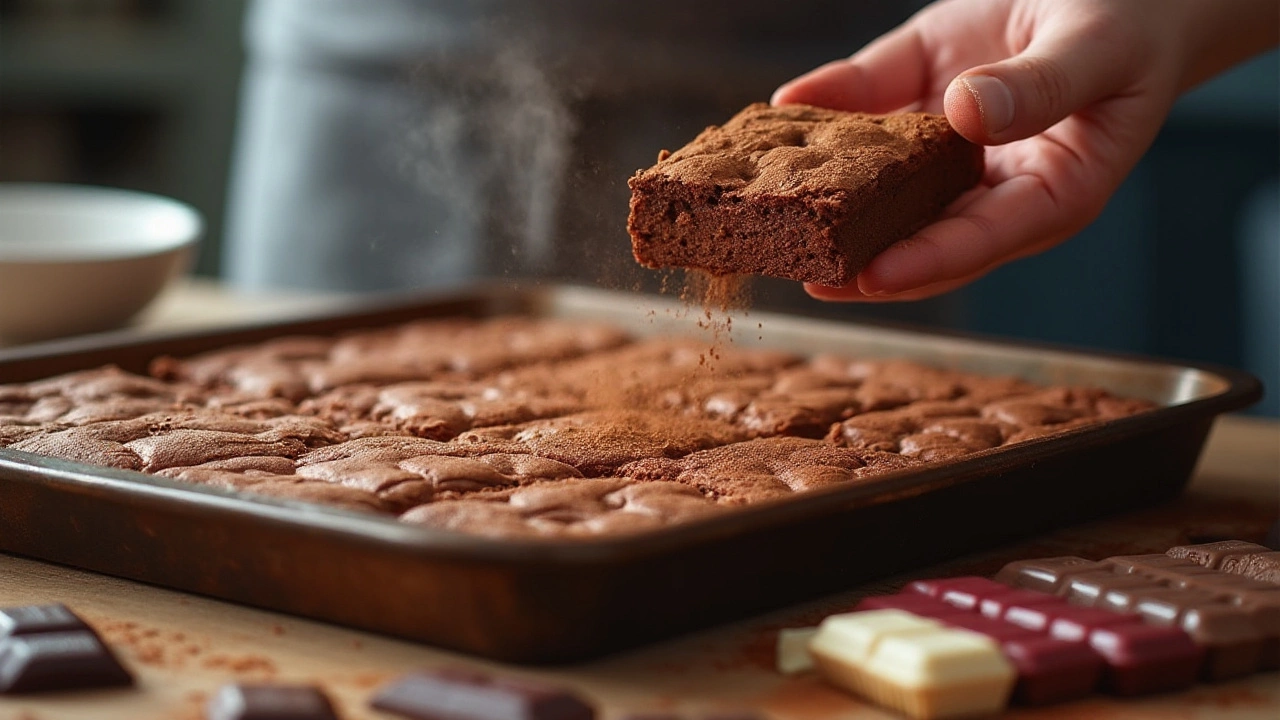
Tips for Perfecting Brownie Texture
The secret to achieving the perfect brownie texture lies in understanding both the art and science of baking. Whether you prefer your brownies fudgy, cakey, or somewhere in between, there are specific techniques to ensure you get the desired consistency every time. Knowing how to balance ingredients, adjust baking times, and apply tried-and-true testing methods can elevate your brownies from ordinary to extraordinary. First, let's delve into the role of each primary ingredient: the flour, an essential part of the structure, dictates the density, where less flour creates that sought-after fudgy delight, and more lends a cakier feel. Choose your flour wisely and don’t be afraid to experiment with types like almond or coconut flour for a unique twist on the traditional recipe.
The fat content, typically held by butter or oil, is another key player, influencing the softness and moisture. Using butter gives you a rich, savory kick with a hint of saltiness, while oil can offer a moister result, ideal for those who prize a chewy consistency. Also crucial is the type of chocolate treats you use: high-quality chocolate not only affects the taste profoundly but also contributes to a smooth, melt-in-your-mouth texture. As baking times vary depending on your oven and desired doneness, it's essential to experiment with timing to discover your perfect bake.
One classic method to check brownie doneness is the 'toothpick test.' However, for the ideal balance, you want to aim for a slightly wetter toothpick. This ensures that your brownies will remain moist as they cool. Keeping track of the cooling time is just as vital as baking itself, as the texture continues to set and gel beyond the oven. Some experts even recommend refrigerating brownies before serving for a denser texture.
Temperature can also be a crucial factor. An interesting method some bakers use is the 'chill and slice' approach, where once baked, the brownies are chilled entirely in the fridge before slicing, which ensures clean, precise edges and a stable internal crumb. Brownies left to cool in the pan are often firmer and easier to slice neatly. Remember, patience is a baker’s best friend. The wait may test your will, but it will be utterly rewarding. Operating in an optimal baking environment can significantly shift the results, with humidity and altitude playing their roles in affecting texture. Low humidity can dry out your baked goods, while high altitude requires adjustments in ingredients and baking times.
"Understanding how key ingredients interact at the molecular level can truly transform your baking outcomes," notes famous pastry chef Claire Saffitz in her baking recipes, emphasizing precision and practice.
Finally, brownie molds can have noteworthy impact, utilizing metal pans which heat up rapidly, and often produce a lighter, airier crumb compared to glass pans that provide a denser, damper result. Assessing your tools can prove just as essential as choosing your ingredients wisely. Your enjoyable twist on brownie flavors begins here, so embrace the nuances of this cherished chocolate dessert and master the creation of the perfect brownie texture, one bake at a time!
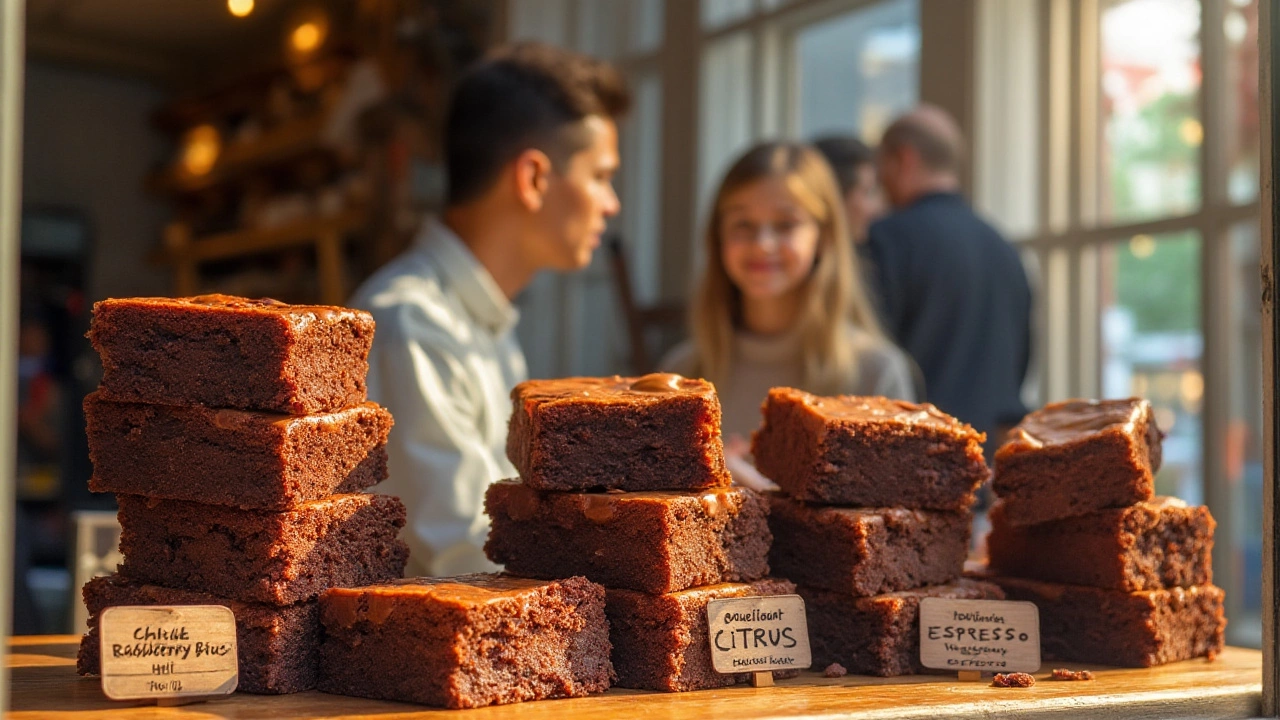
Exploring Brownie Pairings
Pairing your favorite brownie flavors with the right accompaniments can create a delightful symphony that elevates your dessert experience. Understanding how contrasting flavors work can open up endless culinary possibilities. A classic chewy brownie, for instance, can be enhanced with the delicate sweetness of vanilla ice cream. The temperature contrast between warm brownie pieces and cold, creamy ice cream epitomizes all that's magical about dessert. Aroma plays a vital role as well, with aromatic spices like cinnamon or cardamom becoming a surprising yet welcome addition when sprinkled over melted chocolate toppings.
For those who prefer a grown-up twist, consider exploring the world of beverage pairings. Wine aficionados might enjoy a rich, fudgy brownie with a glass of port or a deep red wine that complements the dessert’s cocoa richness. Coffee lovers can elevate the experience by coupling brownies with a freshly brewed espresso, amplifying the chocolate’s bitter notes. And surprisingly, the tanginess of a well-brewed iced tea can also cut through the density of a brownie, providing a refreshing counterpoint.
Cheese and chocolate might seem unconventional, but certain cheeses can indeed pair beautifully with brownies. A tangy, creamy goat cheese or a sophisticated blue will delight with their unusual but harmonious combinations. This versatility is even highlighted by culinary experts. As Julia Child famously said,
"The only time to eat diet food is while you're waiting for the steak to cook."While she wasn't talking about brownies directly, her spirit of indulgence resonates here. Pairing your chocolate treats thoughtfully only enhances the joys of dessert.
Perhaps the most exciting exploration lies in creating a flavor tableau with colorful garnish and toppings. Fresh fruits such as raspberries or strawberries introduce a vibrant, juicy element that complements the rich chocolate backdrop. Nuts such as toasted almonds or pecans not only add crunch but also a layer of earthiness to each bite. Don’t shy away from including a drizzle of fruit syrup or a hint of sea salt to introduce an extra dimension of taste. These innovations make each mouthful a surprise and delight, urging you to take your time and savor each flavor.
Dessert recipes are all about trial and error. Experimentation is key to finding a combination that sings to you. You might stumble upon unconventional combinations that activate all senses, like a rare dark chocolate brownie with caramel drizzle and smoked paprika. Let your taste guide you but be open to new experiences. After all, the pairing process is meant to be enjoyed, savored, and above all, shared with those who appreciate the simple pleasures of life. Embrace the moment, and let the humble brownie be your muse.


